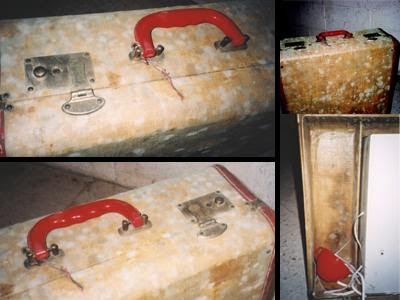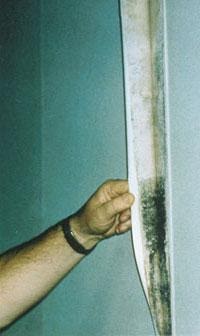
Although mold is a natural part of our environment, it becomes a problem when it grows indoors and releases mold spores into the air. Although there are no EPA regulations or standards for airborne mold contaminants, the CDC and the World Health Organization acknowledge that exposure to mold spores can cause upper respiratory problems, including asthma, difficulty breathing, and infections. If no one in your home is experiencing health issues as a result of crawlspace and/or basement mold, it’s still important to get it checked and treat it. Where there is moisture, mold usually follows. Treating the mold problem will enable you to identify and fix the moisture problem, too.
Mold comes in many colors, the most common being white and black. Here are a few examples of the different types of mold that has been found in homes:


Photos courtesy of the EPA
Mold Can Occur Anywhere
Mold can grow in various places, and surface mold is common in bathrooms, kitchens, laundry areas, around water pipes, and windowsills that collect moisture when it rains. In most cases, surface mold can be treated and removed with a mixture of bleach and water.
Crawlspace and Basement mold is the most concerning type of mold because it’s often hidden from view and can grow and spread, invading the foundation, drywall, and frame of your home. Wherever there is moisture and inadequate ventilation, mold can grow, increasing the number of mold spores in your home.
If there’s one place in your home that is likely to collect moisture and have inadequate ventilation, it’s the basement. In the right environment, mold can grow quickly and wreak havoc on your indoor air quality. Don’t wait until it’s too late; consult with a certified mold inspector as soon as possible.
How to Identify Crawlspace and Basement Mold
While structural mold can be hard to notice visually, there may be other signs of its presence. Strange smells and increased allergies can signify mold issues, as can stains on wallpaper, drywall, or wood. If you experience an earthy scent or any visual signs of mold, it’s crucial to address the situation immediately. If you suspect mold, it’s best to consult with crawlspace and basement mold remediation specialists. A reputable mold remediation specialist is certified by OSHA and knows how to identify AND remediate mold.
Crawlspace and Basement Mold Treatment
Look for a provider who has experience with Charlotte area basement mold remediation and offers state-of the art treatments. Your mold treatment specialist should offer a superior, safe, and environmental-friendly technique of mold removal. In addition to mold treatment, look for a moisture treatment company who provides crawl space and basement waterproofing and yard drainage solutions. Mold problems and water go hand-in-hand, treating one without treating the other will lead to more mold problems in the future.
Ask about dry ice blasting, a safe and environmentally friendly mold remediation service.
If you suspect a basement mold problem in your home, Moisture Loc is OSHA certified and ready to help. Contact Moisture Loc for a free consultation today.


